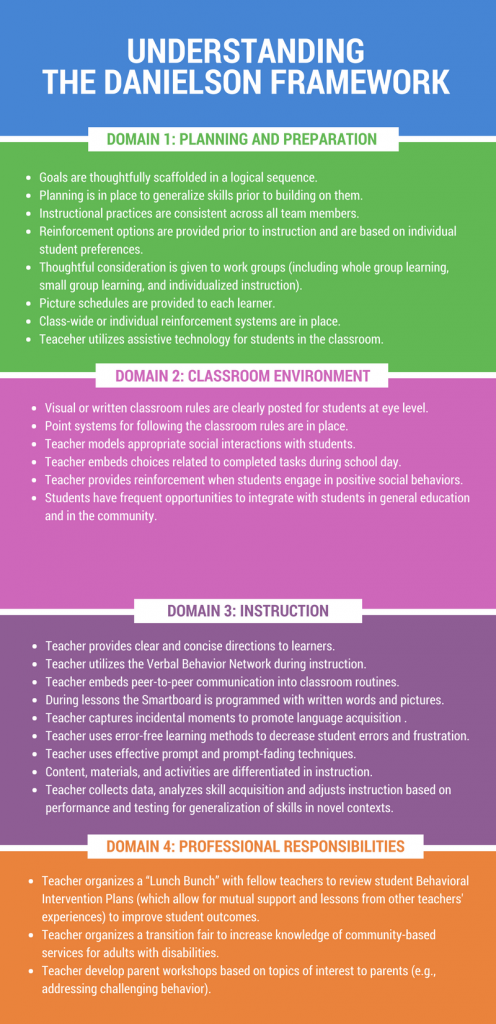Districts Decide A Design For A Teacher Evaluation System – The Old Way Failed
The Current Teacher-Framework teacher evaluation system has two functions:
1. Help teachers define their weaknesses and strengths and how to improve teaching practices.
2. Sort out low-performing teachers, provide them with support to improve, or remove teachers who show no improvement from the classroom.
The older evaluation systems failed at both levels leaving teachers with little or no support on how to improve and did nothing to identify struggling/low-performing teachers. The Chicago school district was not different; it failed to identify underperforming teachers (0.3%) and failed to find support or a solution. Typically, in business around 10% of workers are underperforming. In Chicago, most of the district teachers were given high ratings, the lower performing teachers struggled to receive help or guidance.
Principals Had Difficulty Conducting Observations So Things Had To Change!
We know that principals are the head of instruction and operations for their schools. In this survey, principals found conducting walk-in and scheduled evaluations of all teachers twice a year hard to complete. Much of the concern came from the scheduled evaluations in which the pre-and post-evaluation conferences were required.
● Non-tenured teachers: Annually.
● Low-rated tenured teachers: Annually.
● High-rated tenured teachers: Every other year.
Back to School Training for Principals and Teachers Framework First!
It was decided principals would receive three types of training and optional support from district staff.
❖ One three-day training session during the summer.
❖ Four one-half day training during the school year.
❖ Regularly scheduled professional learning meetings with other principals during the school year.
The results of the principal training had a positive outcome as principals found it to be, “a fresh perspective and a new standard for classroom evaluations.” Teachers were also provided professional development training sessions that provided an overview of the Charlotte Danielson Framework.
The training was provided during teachers’ back-to-school in-service days and resulted in many teachers falling short in understanding the Framework. Principals became the gatekeepers of the evaluation system and were the main source of information for the teachers. Principals were able to reshape the teacher's understanding of the evaluation Framework and garner their buy-in of the evaluation system.
The Framework That Transformed Our System: The Danielson Framework
The Danielson Framework provides more information on what is going on in the classroom as it rates teachers in 10 different areas of teaching. Classroom observation can provide considerable information about individual teachers as it evaluates multiple areas of classroom instruction. Using this rubric principals can assess individual teachers as well as assessing groups of teachers.
Principals can design professional development of individual teachers as well as a school-wide teacher development plan. Teachers get feedback on their teaching practices and use that feedback to make adjustments and get support to further improve their teaching performance. If you are interested in learning more about supporting schools with this particular framework reach out, Ei360 can provide ongoing support for your teachers using this framework to move your teachers towards Blue Ribbon Status.
Sources
Lauren Sartain, Sara Ray Stoelinga, and Eric R. Brown; with Stuart Luppescu, Kavita Kapadia Matsko, Frances K. Miller, Claire E. Durwood, Jennie Y. Jiang, and Danielle Glazer. November 2011.
Marketing, R. (2019, December 03). Understanding the DANIELSON framework in special education. Retrieved March 19, 2021, from https://www.rethinked.com/blog/blog/2017/07/05/understanding-the-danielson-framework-in-special-education
Rethinking Teacher Evaluation in Chicago Lessons Learned from Classroom Observations, Principal-Teacher Conferences, and District Implementation. Consortium On Chicago School Research At The University Of Chicago Urban Education Institute.

